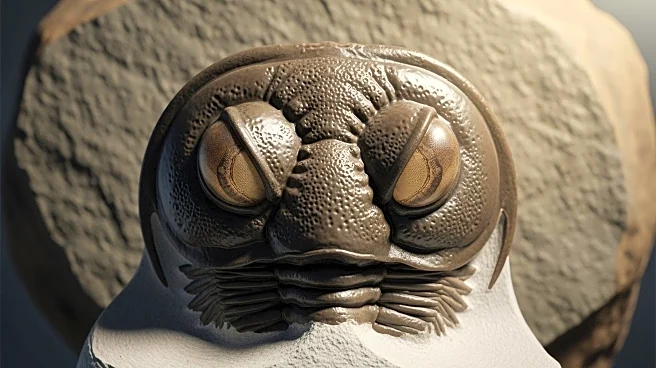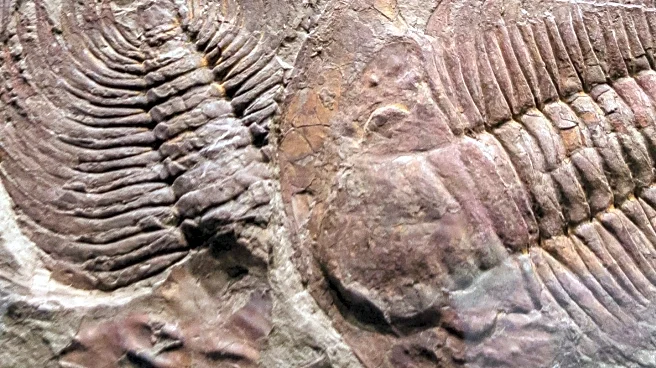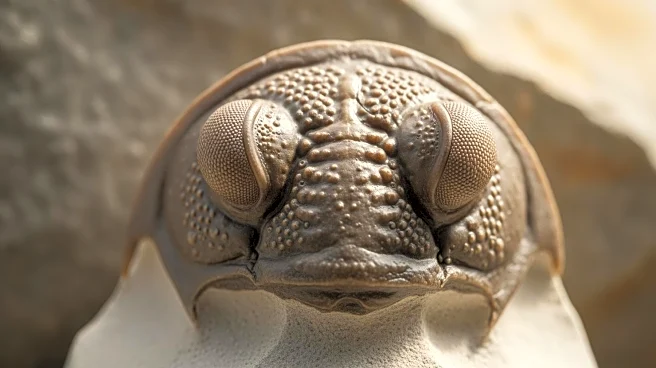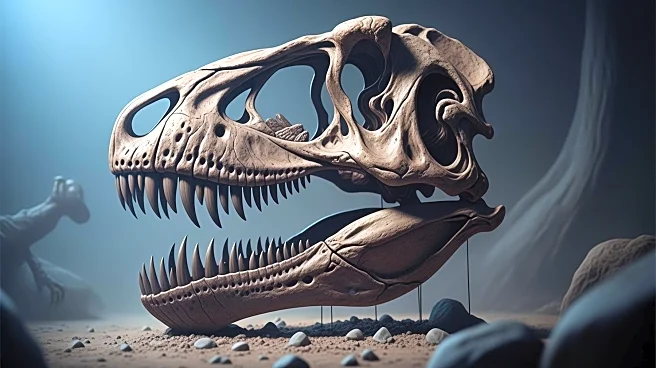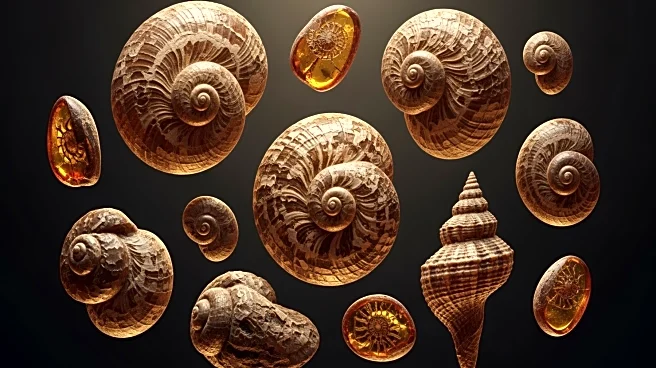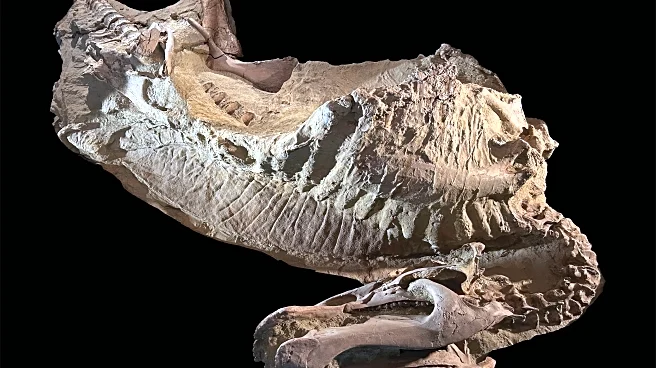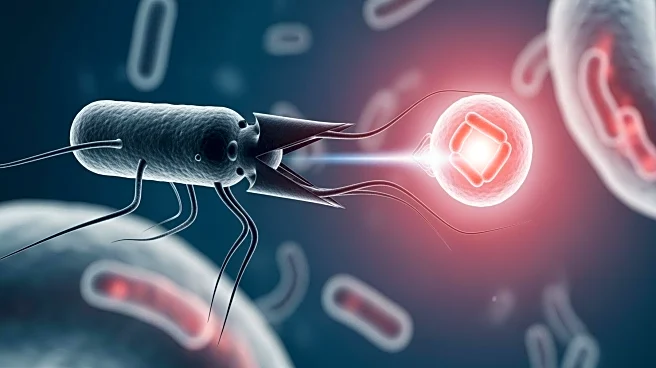What's Happening?
A well-preserved fossil of the trilobite species Aulacopleura koninckii has revealed a compound eye remarkably similar to those of modern insects and crustaceans. The study, published in Nature, describes the trilobite's eye as a 'fully modern' visual
system, comparable to those of bees and dragonflies. This discovery suggests that complex visual systems may have developed much earlier than previously thought, during the Cambrian period. The fossil's preservation allowed researchers to identify features of an apposition compound eye, which provides a broad, motion-sensitive mosaic image.
Why It's Important?
The finding challenges current evolutionary theories about the development of vision, suggesting that such complex systems emerged rapidly during the Cambrian explosion. This period is known for the sudden appearance of diverse life forms, and the discovery of modern vision hardware in an ancient organism raises questions about the mechanisms of evolution. The study could prompt a reevaluation of how intricate biological structures evolve and the role of natural selection in this process. It also highlights the potential for fossil evidence to provide new insights into the history of life on Earth.
Beyond the Headlines
The discovery of a modern visual system in a trilobite fossil may have broader implications for understanding the evolution of sensory organs. It challenges the notion that complex structures develop gradually over long periods, suggesting instead that they can arise quickly under certain conditions. This could influence future research on the evolution of other sensory systems and the factors driving rapid evolutionary changes.
